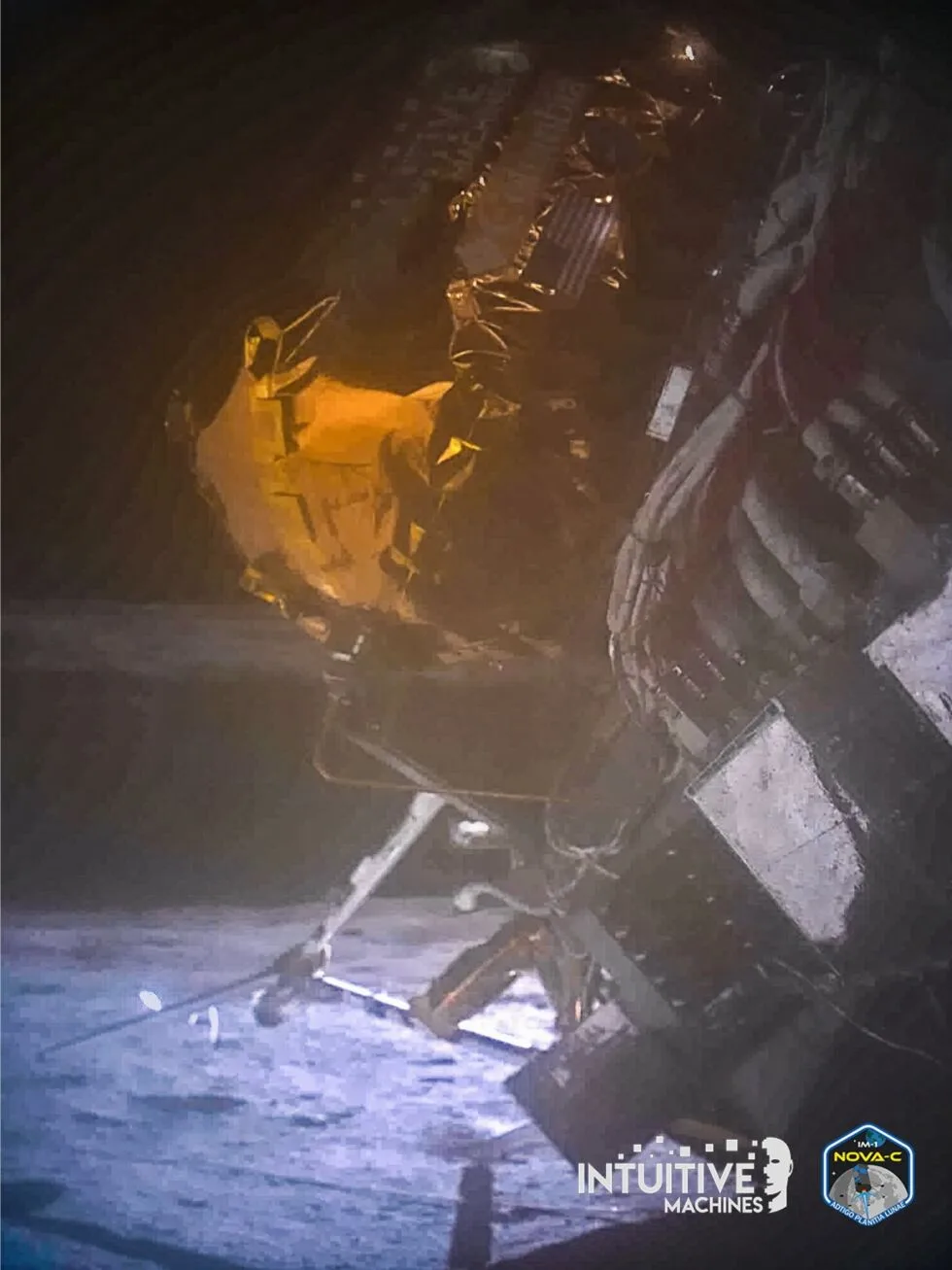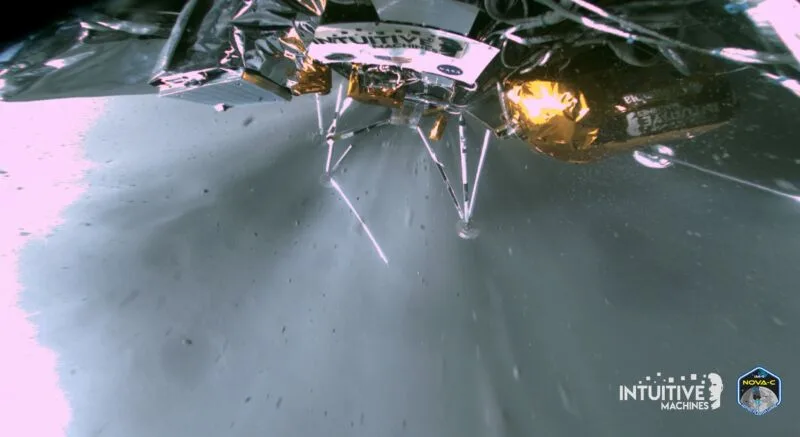reader comments
48
After six days and the public release of new images, engineers have finally pieced together the moments before, during, and after the Odysseus lander touched down on the Moon.
During a news conference on Wednesday, the chief executive of Intuitive Machines, Steve Altemus, described what his company has learned about what happened last Thursday evening as Odysseus made its powered descent down to the Moon.
From their control room in Houston, the mission operators watched with fraying nerves, as their range finders had failed. A last-minute effort to use altitude data from a NASA payload on board failed because the flight computer on board Odysseus could not ingest it in time. So the lander was, in essence, coming down to the Moon without any real-time altimetry data.
The last communication the operators received appeared to show that Odysseus had touched down on the Moon and was upright. But then, to their horror, all telemetry from the spacecraft ceased. The data on the flight controllers’ consoles in Houston froze. They feared the worst.
Skidding down to the Moon
About 10 minutes later, the lander sent a weak signal back. In that initial trickle of data, based on the lander's inertial measurement unit, it appeared that Odysseus was partly on its side. But there were confusing signals.
On Wednesday, Altemus explained what the team has since pieced together. Because of the lack of altimetry data, Odysseus thought it was about 100 meters higher above the lunar surface than it actually was, so as it touched down it was traveling about three times faster than intended, about 3 meters per second. It was also moving laterally, with respect to the ground, at about 1 meter per second.
"We hit harder than expected and skidded along the way," Altemus explained.
As it impacted and skidded, the spacecraft's main engine was still firing. Then, just as the spacecraft touched down more firmly, there was a spike in the engine's combustion chamber. This is consistent with the bell-shaped engine nozzle coming into contact with the lunar surface.
Advertisement
It is perhaps worth pausing a moment here to consider that this spacecraft, launched a week earlier, had just made an autonomous landing without knowing precisely where it was. But now it found itself on the Moon. Upon impact, one or more of the landing legs snapped as it came down hard. Then, at that very moment, with the engine still burning, an onboard camera snapped an image of the scene. Intuitive Machines published this photo on Wednesday. It's spectacular.
"We sat upright, with the engine firing for a period of time," Altemus said. "Then as it wound down, the vehicle just gently tipped over."

Based on the gravity of the Moon, Intuitive Machines and NASA calculated that it took about two seconds to tip over. The lander fell on its side, with a helium tank or radio shelf contacting the Moon. This protrusion, combined with the 12-degree slope of the terrain, means that Odysseus is now gently leaning on the lunar surface at about a 30-degree angle. On Tuesday, the spacecraft returned an image that verified these conclusions.
"We have that photo now to confirm that's the orientation," Altemus said.
Sleepy time
As Intuitive Machines has better understood the situation and the status of its vehicle, it has been able to download a torrent of data. NASA has gotten valuable information from all six of its payloads on board, said a project scientist for the space agency, Sue Lederer. As of Wednesday, NASA had been able to download about 50MB of data. The baseline for success was a single bit of data.
But time is running out as the Sun dips toward the horizon. Odysseus will run out of power as soon as Wednesday evening, entering the long lunar night. In about three weeks, as sunlight starts to hit the spacecraft’s solar panels again, Intuitive Machines will try to wake up the spacecraft. The odds are fairly long. The chemistry of its lithium-ion batteries doesn’t like cold, and temperatures will plummet to minus-280° Fahrenheit (minus-173° Celsius) in a few days. That may wreck the batteries or crack the electronics in the flight computer.
Yet hope remains eternal for a spacecraft its operators have taken to affectionately calling Odie. It has defied the odds so far. "He’s a scrappy little dude," Lederer said. "I have confidence in Odie at this point."
Original Article Published at Arstechnica
________________________________________________________________________________________________________________________________




